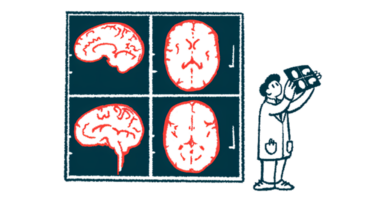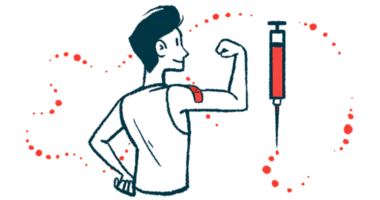AAN 2024: Ocrevus benefits Black, Hispanic patients same as whites
CHIMES study enrolled 182 'underrepresented' people with RRMS

Ocrevus (ocrelizumab) had similar benefits in Black and Hispanic multiple sclerosis (MS) patients as earlier clinical trials with white patients did, one-year data from the CHIMES clinical trial indicates.
About half of the CHIMES participants achieved no evidence of disease activity, or NEDA, which is defined as the complete lack of relapses, six-month confirmed disability worsening, or MRI disease activity. As seen in interim analyses, more than 90% of patients didn’t have any relapses or disability worsening, and around half didn’t develop new or enlarging brain lesions.
“CHIMES is the first and only prospective study addressing the paucity of data on the efficacy of disease-modifying therapies in these underrepresented populations,” said Lilyana M. Amezcua, MD, professor of neurology at the University of Southern California. “The overall high efficacy of ocrelizumab seems to be consistent [and] aligns with pivotal trials, but also the safety of ocrelizumab remains favorable.”
Amezcua presented the findings at the American Academy of Neurology (AAN) 2024 annual meeting, which is being held in in Denver and online. Her talk was titled, “One-year Analysis of Efficacy and Safety Data from Black/African American and Hispanic/Latino People with Relapsing Multiple Sclerosis Receiving Ocrelizumab Treatment in the CHIMES Trial.”
While MS has historically been thought to only affect white people, it’s been more recently recognized that minority populations, including Black and Hispanic people, can also develop the autoimmune condition. These patients have greater disease severity, faster disease progression, and worse disability than their white counterparts, which may be attributed to a combination of “genetic, environmental, and social factors,” according to Amezcua.
Still, there’s a lack of data on the effectiveness of disease-modifying therapies (DMTs) in minorities, largely due to their being underrepresented in clinical trials. Amezcua pointed to a review study that found that Black and Hispanic patients accounted for under 10% of participants in MS clinical trials.
Testing Ocrevus in minority populations
The Genentech-sponsored Phase IV CHIMES trial (NCT04377555) sought to address this by testing the safety and effectiveness of Ocrevus in self-identified Black/African American and Hispanic/Latino patients with relapsing forms of MS.
Ocrevus was chosen because of its mechanism of action in MS; it works by depleting B-cells, a family of immune cells implicated in the disease. Studies indicate B-cells may play a greater disease-driving role among Black and Hispanic patients than white patients.
CHIMES was designed with input from patients, advocacy groups, and clinical researchers, Amezcua said. Efforts were made to overcome barriers that have limited minority inclusion, including lack of trial access and community sites, loss of income from missed work, and the absence of culturally appropriate trial materials.
Relapsing MS patients, ages 18-65, who were able to walk at least short distances unaided were enrolled across sites in the continental U.S. and Puerto Rico. One site was in Kenya.
Trial inclusion criteria were designed with the target population in mind, according to Amezcua. That included allowing certain conditions, such as diabetes and high blood pressure, as well as laboratory findings that might be more common, in the groups being enrolled.
This trial design let CHIMES meet its enrollment goal of 150 people early, and to exceed it. Ultimately, 182 people were enrolled, including 113 (62%) who were Black or African American and 69 (28%) who were Hispanic/Latino.
Participants had a mean age of 35.5 and had been living with MS symptoms for about five years, on average. Most were treatment-naive. “In a way, it’s a much younger cohort than expected,” Amezcua said.
All the participants received Ocrevus at its approved dosing regimen for 48 weeks, or nearly a year. As previously reported, NEDA was achieved by more than half — 46% of Black and 58% of Hispanic/Latino participants. More than 94% of the patients in either group didn’t have any relapses during the study and a similar proportion remained free of six-month confirmed disability progression or inflammatory brain lesions.
Fewer patients — 46% of Black and 63.8% of Hispanic participants — remained without new or enlarging brain lesions throughout the trial, however, which was the main factor that prevented them from reaching NEDA.
This was likely attributed to the first six months, where patients, who had a generally high lesion burden to begin with, hadn’t yet started responding to treatment, Amezcua said. Indeed, more than 93% of the participants in either group developed no new or enlarging lesions between the sixth month and the trial’s end.
Secondary trial endpoints similarly supported Ocrevus’ efficacy in these populations, with functional measures, disability, and relapse rates remaining stable throughout. Consistent with its mechanism, Ocrevus also led to sharp reductions in blood B-cell counts early on, as was seen in pivotal Phase 3 trials. The therapy’s safety profile was also similar to earlier studies, with “no noticeable differences,” Amezcua said.
CHIMES participants are continuing to receive treatment in an optional three-year extension phase. Further trial analyses are also ongoing, including evaluations of biomarkers, patient-reported outcomes, and genetic data.
Note: The Multiple Sclerosis News Today team is providing coverage of the American Academy of Neurology (AAN) 2024 Annual Meeting April 13-18. Go here to see the latest stories from the conference.







